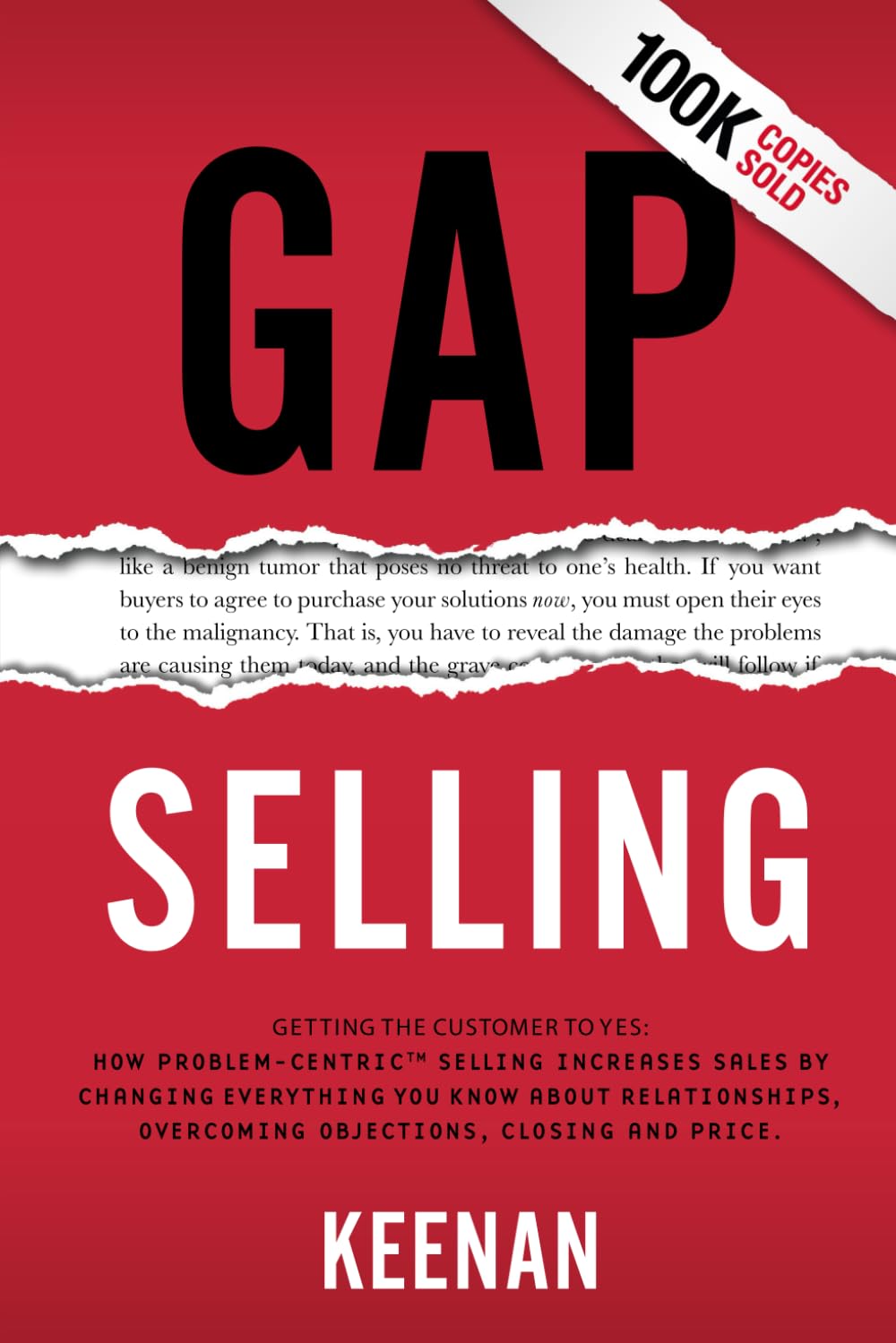![]()

Gap Selling by Keenan challenges everything you thought you knew about sales. With bold, no-BS insights, it exposes the myths holding salespeople back and introduces a powerful new approach focused on identifying and closing the gap between a buyer’s current state and desired future state. The result? Shorter cycles, higher win rates, and real sales impact.
Chapters of Gap Selling
Gap Selling is organized into 21 chapters. These chapters guide readers through Keenan’s problem-centric sales methodology, from understanding the customer’s current and future states and defining the “gap,” to executing effective discovery, prospecting, and pipeline management.
Each chapter builds on the central idea that sales success comes from diagnosing and addressing the gap between a customer’s current and future state, challenging traditional sales tactics, and focusing relentlessly on the customer’s problems and motivations.
Chapter 1: Welcome to the Game
- Introduces the concept of Gap Selling and sets the stage for a problem-centric approach to sales.
- Emphasizes that successful selling is about understanding and addressing the gap between a customer’s current state and desired future state.
Chapter 2: The Nine Truthbombs of Selling
- Outlines nine core principles that challenge traditional sales beliefs.
- Sets the foundation for a new perspective on sales, focusing on diagnosing and solving customer problems instead of pushing products.
Chapter 3: The Current State—Where Customers Are
- Teaches how to uncover and deeply understand a prospect’s current situation, pain points, and obstacles.
- Emphasizes active listening and diagnostic questioning to get a clear picture of the customer’s reality.
Chapter 4: The Future State—Where Customers Want to Go
- Focuses on identifying the customer’s desired outcomes, goals, and aspirations.
- Guides salespeople to help customers articulate what success looks like for them.
Chapter 5: Relationships Don’t Matter (Kinda)
- Challenges the belief that strong personal relationships drive sales.
- Argues that credibility, expertise, and value are more important than likability, though trust remains essential.
Chapter 6: The Gap Defined
- Defines the “gap” as the space between the current and future state.
- Explains that the value of the sale is in the size and urgency of this gap—the bigger the gap, the greater the motivation to buy.
Chapter 7: Get Them to Let You Help
- Discusses building credibility and trust so prospects are open to your guidance.
- Focuses on positioning yourself as a problem-solver and advisor, not just a vendor.
Chapter 8: Discovery: Know Your Clients Better Than They Know Themselves
- Details the discovery process as the heart of Gap Selling.
- Teaches how to ask probing questions, uncover root causes, and diagnose problems more deeply than the client can themselves.
Chapter 9: Is the Gap Worth It?
- Guides salespeople in helping customers quantify the impact of their problems.
- Assesses whether the gap is significant enough to justify change and investment.
Chapter 10: Know Your Customers’ Why
- Focuses on uncovering the underlying motivations and business drivers behind a customer’s desire for change.
- Helps salespeople connect their solution to what matters most to the buyer.
Chapter 11: How to Do a Kickass Demo
- Explains how to tailor product demonstrations to the customer’s specific gap.
- Stresses showing only relevant features that address the identified problems and desired outcomes.
Chapter 12: Move Your Deals Through the Pipeline
- Offers strategies for advancing deals by continually focusing on the gap.
- Emphasizes the importance of ongoing discovery and value reinforcement throughout the sales cycle.
Chapter 13: Troubleshooting
- Addresses common obstacles and setbacks in sales.
- Provides practical advice for diagnosing why deals stall and how to get them back on track.
Chapter 14: Prospecting: Getting the First “Yes!”
- Covers effective prospecting techniques rooted in the Gap Selling methodology.
- Focuses on how to open conversations by identifying and referencing the prospect’s gap.
Chapter 15: Smart Prospecting Prep
- Details how to research and prepare for prospecting outreach.
- Encourages understanding the prospect’s current state before making contact.
Chapter 16: How to Capture Attention
- Provides strategies for breaking through buyer resistance and getting noticed.
- Recommends messaging that speaks directly to the prospect’s problems and desired outcomes.
Chapter 17: Set the Right Cadence
- Discusses the importance of consistent and well-timed follow-ups.
- Advises on creating a communication rhythm that keeps the prospect engaged without overwhelming them.
Chapter 18: Manage the Pipeline
- Teaches how to organize and track deals using the gap as a guiding metric.
- Emphasizes prioritizing opportunities with the largest and most urgent gaps.
Chapter 19: Build a Commit Culture
- Explains how to foster accountability and follow-through within the sales team.
- Stresses the importance of commitments from both the salesperson and the customer to drive deals forward.
Chapter 20: Hire the Right People
- Offers advice on recruiting and developing sales talent who can thrive in a problem-centric, gap-focused environment.
Chapter 21: It’s Not About You
- Reinforces the core message that sales is about the customer’s needs, not the salesperson’s agenda.
- Encourages empathy, curiosity, and a relentless focus on solving the customer’s problems
